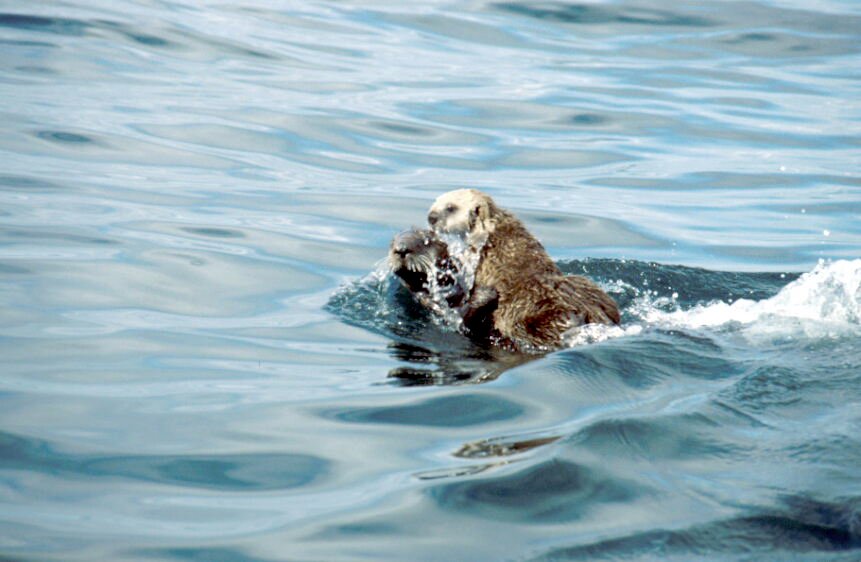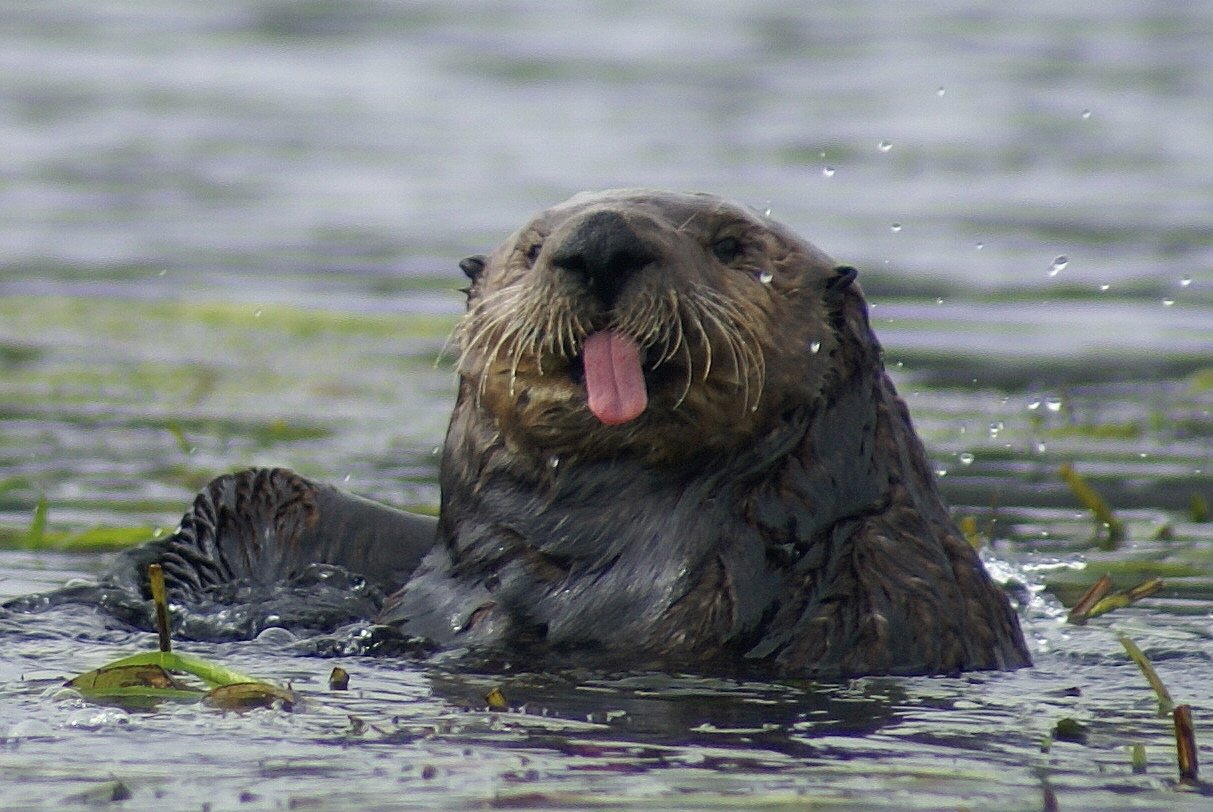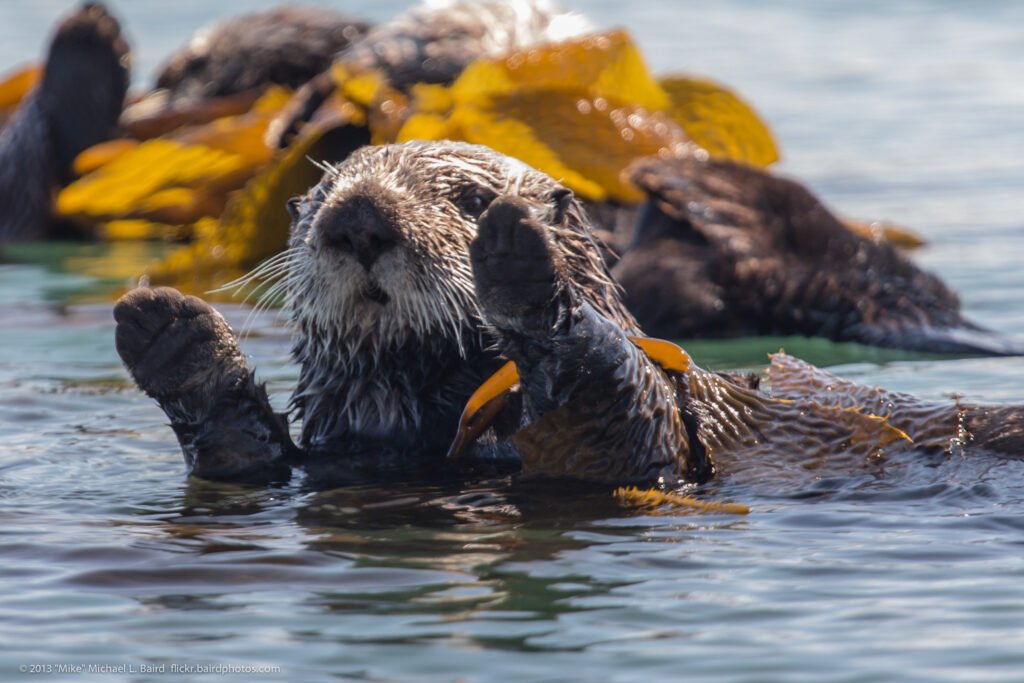Imagine gliding through the chilly, emerald-green waters of the Pacific, sunlight flickering through waving forests of kelp. Suddenly, you spot a small, furry creature floating on its back, cradling a stone against its chest. With nimble paws, it smashes a shellfish against the rock, revealing its tender meal inside. This is the sea otter—nature’s pint-sized engineer and one of the planet’s most inventive tool users. Their clever antics aren’t just adorable; they’re proof of remarkable intelligence, survival skills, and a deep connection to the hidden world beneath the waves. Dive in, and discover how these whiskered geniuses have turned the simple rock into a powerful tool, reshaping their lives and even the fate of entire kelp forests.
The Ingenious Minds of Sea Otters

Sea otters, with their expressive eyes and playful natures, are much more than just cute faces in the kelp forest. They belong to a rare group of animals known for using tools, a sign of advanced brainpower. Studies have shown that sea otters possess a large brain relative to their body size, hinting at remarkable cognitive abilities. Their intelligence is evident not only in their problem-solving skills but also in their creative approach to daily challenges. For sea otters, the ocean is a puzzle, and every meal is an opportunity to put their minds to work. Watching an otter choose the perfect rock demonstrates a level of decision-making rarely seen in the animal kingdom. This ability to innovate and adapt sets them apart as true masterminds of their environment.
Rocks as Tools: A Signature Skill

If you’ve ever watched a sea otter dining, you know their rock-using behavior is nothing short of mesmerizing. Otters are known to select specially-shaped stones, tucking them under their armpits and bringing them along on foraging dives. When they find a tough-shelled clam or sea urchin, they place it on their chest and use the rock like a hammer, cracking open the shell with rhythmic blows. This tool use isn’t just a random trick—it’s a learned behavior, honed through practice and observation. Scientists have observed young otters watching adults closely, mastering the art of rock-smashing over time. This tradition, passed from one generation to the next, is a testament to their extraordinary learning abilities.
How Otters Choose Their Tools
Not every rock will do for a discerning sea otter. These animals are surprisingly picky about their tools, often searching for rocks with the right shape, size, and weight. Flat, smooth stones are favorites, fitting perfectly against an otter’s chest and offering a good surface for pounding. Some otters even have a “favorite” rock, which they may carry for days tucked into a loose fold of skin under their forearm—like a precious treasure or a craftsman’s trusted hammer. This selectivity shows that otters are not simply opportunistic; they carefully evaluate their environment and make choices that increase their success, much like a chef picking the right knife for a recipe.
Foraging Masters: Unlocking Nature’s Pantry

In the wild mosaic of the kelp forest, food isn’t always easy to access. Sea otters rely on their toolkits to feast on some of the ocean’s most armored delicacies. Shellfish, abalone, sea urchins, and crabs all have hard exteriors designed to deter predators. But an otter’s combination of dexterous paws and trusty rocks makes light work of these defenses. This allows them to access a wide range of foods that other predators simply can’t reach. Their diverse diet plays a crucial role in their survival, especially in environments where food sources can change with the seasons or tides.
Passing Down the Craft: Learning by Watching
Sea otter pups grow up surrounded by skilled role models. From their earliest days, they watch their mothers and elders use rocks with surprising finesse. The learning process is hands-on and visual, with young otters practicing by mimicking the adults’ movements. Over time, they refine their technique, learning to select, carry, and wield rocks just like their mentors. This social learning helps ensure that new generations are equipped with the knowledge they need to survive. It’s a beautiful example of culture in the animal world—a tradition of tool use handed down through the family line.
Kelp Forest Guardians: A Ripple Effect

The sea otter’s clever use of tools doesn’t just benefit themselves—it has far-reaching effects on the entire kelp forest ecosystem. By preying on sea urchins, which can devastate kelp beds if left unchecked, otters keep these underwater forests healthy and thriving. Kelp forests are vital nurseries for countless marine creatures and help capture carbon from the atmosphere. In this way, the otter’s simple act of cracking open a shell with a rock echoes through the whole ecosystem, supporting the balance of life beneath the waves.
Survival in a Harsh Environment
The Pacific coastline, where sea otters make their home, is both beautiful and unforgiving. Here, storms, strong currents, and predators like sharks and orcas pose constant threats. Otters have adapted to these challenges not just with their thick fur and agile bodies, but with their inventive use of tools. Their ability to access protected food sources gives them a crucial edge. In times of scarcity, a well-chosen rock can mean the difference between going hungry and having a hearty meal. This resilience is a testament to their adaptability and ingenuity.
Tool Use Beyond the Kelp Forest

While kelp forests are iconic otter habitats, these animals use their rock-smashing skills in various environments, from rocky shores to shallow bays. Wherever they live, they adapt their techniques to the local landscape. Some otters have even been observed using rocks to pry loose prey from crevices or to open jars in captivity, showing their ability to solve new problems with familiar tools. This flexibility highlights the depth of their intelligence and their willingness to experiment with new solutions.
Threats to a Clever Species

Despite their brilliance, sea otters face serious threats. Pollution, oil spills, habitat loss, and human disturbance have all taken a toll on their numbers. Diseases and predators add to the challenge. Yet, the very skills that make otters unique—like their ability to adapt, learn, and innovate—offer hope for their survival. Conservationists are working hard to protect otter habitats and support population recovery, inspired by the resilience and creativity of these remarkable animals.
Why Sea Otters Matter to Us All
Sea otters aren’t just a curiosity for scientists or a delight for wildlife watchers. They play a key role in keeping coastal ecosystems healthy, which in turn supports fisheries, tourism, and even climate stability. Their story reminds us of the intricate connections between species, and how even a small animal with a simple rock can ripple through an entire world. Watching an otter at work is a powerful reminder of nature’s ingenuity and the value of protecting our wild places.
Sea otters, with their stone-age skills and boundless curiosity, invite us to see the natural world through new eyes. Their legacy in the kelp forests is proof that intelligence and adaptability can flourish even in the wildest corners of our planet. What other secrets might the ocean hold, waiting for clever hands—or paws—to unlock them?




